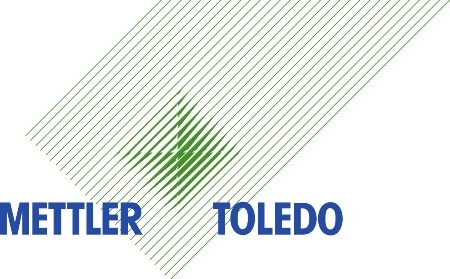这current experiment was performed to find the glass transition temperature using a method which depends upon the change of elastic behavior.
Sample
所使用的样品是用两个金属之间的粘合剂层的形式固化的Ku600环氧树脂粉。
Conditions
Measuring cell: TMA
探针:直径3毫米的石英玻璃和3点弯曲附件的圆珠探针。
样品制备
这KU600 epoxy resin powder was cured between two steel plates of 0.1 mm thickness, which were razor blade pieces 16mm by 5 mm in size. The resin powder was 0.06 mm thick. The effect was to produce a sandwich structure as is seen with adhesive bonding. The cured sample was then mounted on the three-point bending accessory part to keep the full 14 mm length between the supports.
.jpg)
TMA测量
样品从50加热oC至240oC at 5 K/min, with the load alternating between 0.5 N and 1.0 N at intervals of 6 seconds, for a period of 12 seconds.
Atmosphere
Static air was used as the atmosphere
.jpg)
Interpretation
这sandwich structure bends slightly due to the force applied to the probe. When there was a 0.5 N change in force the change in bending was about 40 µm, and lasted as long as the cured epoxy powder remained below the glass transition temperature. Once above this temperature, the bending became more obvious to about 200 µm at 1 N.
随着力的变化,弯曲的变化也更加明显,约为130 µm。DLTMA曲线记录了这种变化,因此可以找到玻璃过渡或软化温度。将其评估为以红线表示的平均曲线的中点或开始。
虚线表示在0.5 n和1.0 n上代表探针上力的弯曲曲线的上和下膜。它们之间的差异对应于弯曲模量的弹性。假设是钢片的弹性模量很小的变化很小,因此检测到的变化是由于环氧热固性材料所致。如下图所示,三明治弯曲模量所示的曲线也是一种测量,用于找到环氧粘合剂的玻璃过渡温度。
Evaluation
It is possible to calculate the bending modulus E of the sandwich from the DLTMA curve directly using the following formula:
.jpg)
其中ΔF表示探针上力的变化
ΔL是弯曲的相应变化
Since the geometry of the sample is determined by the thickness (a), the width (b) and the distance between the supports (c), ΔL represents the distance between the envelopes. Thus the amplitude of the DLTMA is in reciprocal relation to the modulus. A blank curve must be subtracted to find the bending modulus.
这static bending is used to determine the softening temperature. For instance, the mean value curve or an envelope is used similar to a penetration measurement. It is therefore possible to find the softening temperature from a measurement which does not have an alternating load, as at a constant IN force. In this situation, the curve would correspond roughly to the lower of the two envelopes.
这glass transition temperatureis typically calculated from the bending modulus curve at its onset, as is done in DMA tests.
TabLE 1。Glass transition temperatures from DLTMA.
.jpg)
在表1中,摘要给出了多次评估的结果,显示了评估对TMA方法的确定的影响。温度取决于DMA测量结果所示的频率。
Conclusions
在探针上使用静态和变化的弯曲测量值提供了一种灵敏的方法,可以找到粘合键层,涂料或填充的热固性的软化或玻璃过渡温度。这里的研究点是样品中发生弯曲或模量变化的温度。
Thus multiple measurements are avoided and the overall test time is reduced. Sample preparation is simplified since the sample geometry only needs to be fitted to the bending measurement accessory. The fact that only limited force can be applied in the TMA even at maximum means that bending samples need to be extremely thin, allowing the measurement of even minimal bending and change in bending.
当报告弯曲测量结果时,还应提及所使用的方法和评估方式。
除DMA以外,在许多情况下,DLTMA测量是找到高度填充或高度增强的热固性材料的软化或玻璃过渡温度的唯一方法。这是因为这些材料在玻璃过渡温度下的热容量和膨欧洲杯足球竞彩胀系数的变化很小。

该信息已从梅特勒·托莱多(Mettler Toledo)提供的材料中采购,审查和调整。欧洲杯足球竞彩
有关此消息来源的更多信息,请访问Mettler Toledo-热分析。